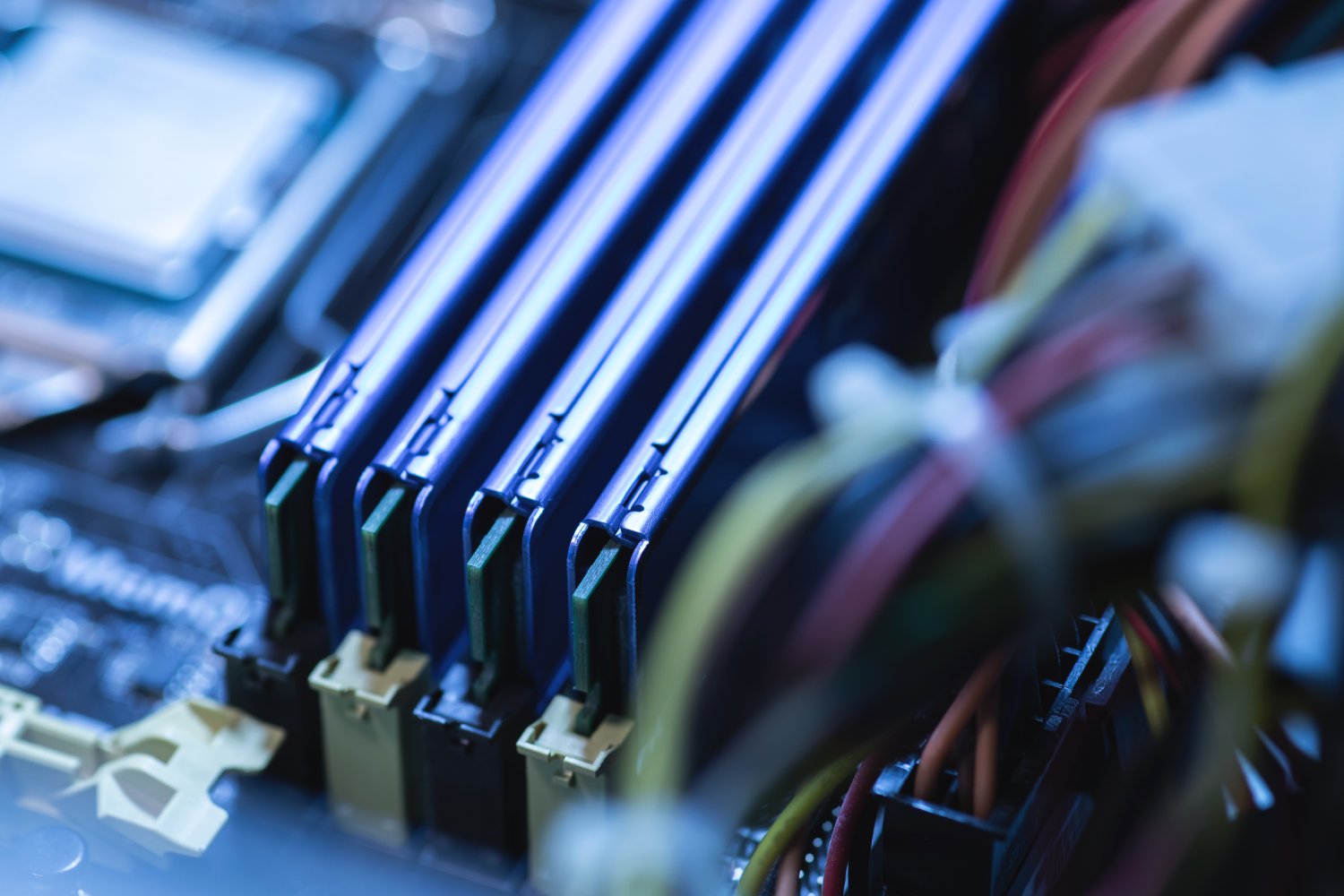Can You Mix RAM brands?
Theoretically, you can mix different RAM brands in your computer system, but you may encounter some problems.
Sometimes mixing different RAM brands can lead to a drop in performance, but if you consider your options carefully, you may be able to avoid issues.
One crucial factor that will undoubtedly cause a problem is using different memory types. For example, different generation RAM sticks will be incompatible.
It is not advisable to risk using different RAM brands even though it is possible. This article will look at the various factors you need to consider when choosing RAM.

Theoretically, you can mix different RAM brands in your computer system, but you may encounter some problems.
Sometimes mixing different RAM brands can lead to a drop in performance, but if you consider your options carefully, you may be able to avoid issues.
One crucial factor that will undoubtedly cause a problem is using different memory types. For example, different generation RAM sticks will be incompatible.
It is not advisable to risk using different RAM brands even though it is possible. This article will look at the various factors you need to consider when choosing RAM.
Why is mixing RAM brands a problem?
Every manufacturer of RAM will use different memory controllers, materials, PCBs and circuits. Mixing brands can sometimes lead to conflicts where a system crashes or fails to boot.
The manufacturer will have tested RAM kits of the same brand to ensure they can work harmoniously.
When you attempt to mix RAM kits from different brands, you will use more Dual-in-line Memory Module (DIMM) slots, creating more opportunities for conflicts.
The reality is that sometimes you will be in a position where you cannot afford to replace your old RAM with an entirely new kit from the same brand. You may be constrained by budget but require an upgrade to your memory to improve performance.
In this instance, it is essential to consider all of the factors that influence the compatibility of the new RAM to your existing RAM to reduce any conflicting issues that will prevent the RAM from working correctly.
Factors that can Cause Problems When Mixing RAM Brands
When installing new RAM, you need to consider various potential issues to avoid causing problems to your system. If you are adding RAM to an existing setup and cannot match the brand, you should at least match the following aspects.
It is also worth noting that your use of your computer will impact whether you will notice the impact of some mismatching between your RAM. The heavier your workload, the more you are likely to be aware of the poor performance of your added RAM.
Voltage
Ram modules have differing voltage needs. Mixing voltages will lead to the more demanding RAM being given less voltage.
Although it will still operate, it may not reach its peak performance, and its stability can be impaired.
Single vs Dual Channel Memory
Depending on your requirements, the memory configuration of the RAM slots can impact your performance.
There are two types of memory – single and dual channels. They operate in different ways and may not be noticeable to most users. Mixing the RAM can lead to some RAM running in a single channel instead of a dual channel.
Browsing or gaming users are unlikely to spot a problem, but for video editing or 3D rendering, which have highly demanding workloads, dual-channel memory can boost performance by up to 20%.
Storage Capacity
Mismatched sizes of RAM sticks can affect memory configuration. A larger RAM module paired with a smaller one causes asynchronous operation.
You may know this as Flex Mode.
It can cause the smaller RAM to pair with only half of the bigger RAM module. The remaining RAM will operate in Single-channel mode.
The intensity of the workload will impact whether this mismatch is noticeable.
Speed
The speed of different RAM kits can significantly impact the effectiveness of your memory.
Although you can configure RAM to run at the speed of the slowest RAM module, you will still encounter some issues.
Frequency and latency affect memory speed. For different frequency RAM sticks to operate together, they will need the same latency.
You can calculate the latency of your RAM stick by using a RAM Latency calculator, or if you are feeling mathematical, you can use the following formula.
Take the clock frequency(cycles) reciprocal and divide by two to give you the latency in nanoseconds.
You are likely to encounter issues if your RAM sticks occupy more than three or four DIMM slots because of speed differences.
What is the advantage of buying a RAM kit?
Buying a RAM kit will eliminate the problems with differing voltages, speeds, channels and sizes.
The problem is new RAM is often required when you decide to upgrade your computer memory, and you will want to improve the storage capacity or speed.
You should plan your RAM purchase around what is best for your CPU and workload to make the best choice. We suggest you seek advice about the optimal RAM specifications for your system.
Choosing Your Memory Configuration
The correct specifications for RAM will depend on the system you have.
You will also need to consider your workload and whether it is a high demand activity. Video editing will need between 32 and 64 GB of RAM compared to Gaming which only needs 16GB.
The type of processor will also affect your RAM choice.
Best RAM for AMD Processors
AMD processors work best with RAM that is twice the internal frequency of the Infinity Fabric (FCLK). Double the rate will harmonize between the CPU and the RAM to provide the best performance.
If your heavy workload has overclocked the FCLK value, you can choose a kit that has twice the rate of the overclocked value to achieve the best performance.
Best RAM for Intel Processors
Intel has made purchasing the correct RAM kits easier as they have benchmarked and rated their CPU for particular speeds.
You can trust their testing methods to give you a clear indication of the perfect speed of Ram required for your model.
Things to consider:
Here are some factors to consider when mixing RAM brands:
-
Specifications Matching: Ensure that the specifications of the new RAM module(s) closely match those of the existing ones. This includes capacity (e.g., 8GB, 16GB), speed (e.g., 2400MHz, 3200MHz), and latency timings (e.g., CL16, CL18). Mixing modules with significantly different specifications can lead to instability.
-
Form Factor and Type: Ensure that the form factor (e.g., DIMM, SO-DIMM) and type (e.g., DDR4, DDR5) of the new RAM module(s) are compatible with your motherboard. Attempting to mix incompatible form factors or types can result in physical incompatibility or failure to boot.
-
Dual-Channel vs. Single-Channel: If your motherboard supports dual-channel memory configuration, it’s generally recommended to install RAM modules in pairs for optimal performance. Mixing RAM brands within the same channel may still work, but it’s preferable to maintain consistency for compatibility and performance reasons.
-
XMP Profiles and Overclocking: If you’re using XMP (Extreme Memory Profile) for overclocking or enabling higher memory speeds, ensure that all RAM modules support the same XMP profiles. Mixing modules with different XMP capabilities could lead to instability or the inability to achieve desired overclocking settings.
-
Testing and Stability: Even if the RAM modules from different brands appear compatible on paper, it’s essential to test their stability under various workloads and stress conditions. Running memory diagnostics or stress tests can help identify any compatibility issues or instability.
Final Thoughts
It will make sense to purchase a single RAM kit for most people if you want to upgrade your computer’s memory. You can then be confident that the RAM will work together to enhance your computer performance.
Of course, you will sometimes be restricted by budget, especially if you need to purchase additional RAM. You may need to experiment with adding some RAM to your existing setup to see if it improves the performance.
In conclusion, while it’s technically possible to mix RAM brands within the same system, it’s not always recommended due to potential compatibility issues. When considering mixing RAM modules, it’s crucial to ensure compatibility in terms of specifications, form factor, and motherboard support.
Want To Buy Some New Tech?
Leave your details, and we will call you.
Take a look at our services
Get in touch.
We’d love to hear from you.
Give us a call, send an email or drop us a note and we’ll call you back.

